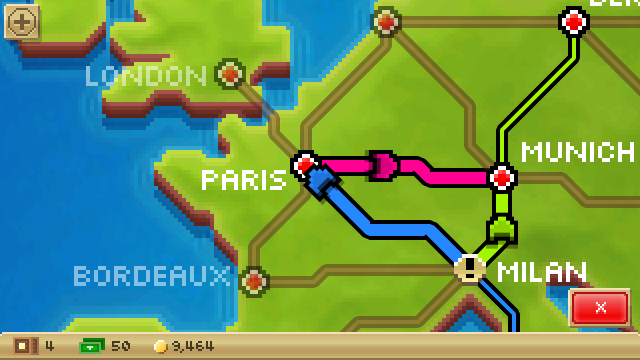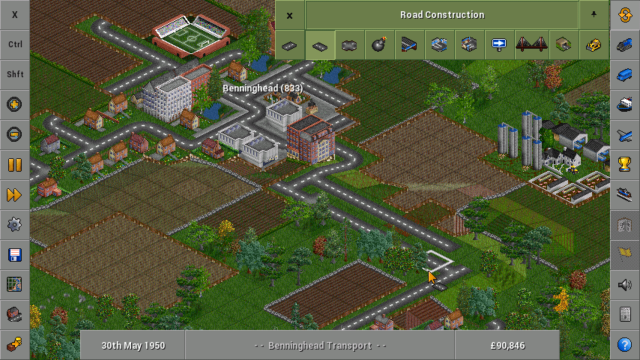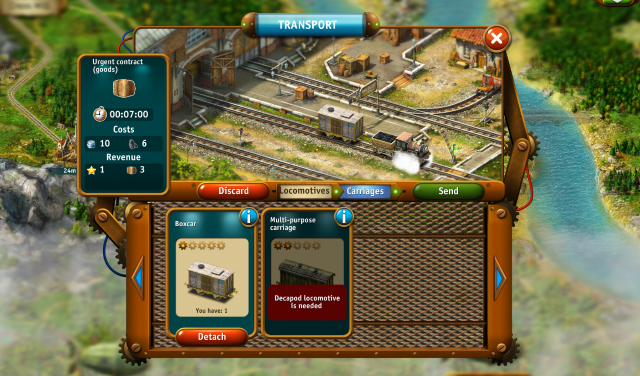

As you may have read before, I have a love of games by Sid Meier. As an Android owner, this leaves me with a problem, as there are no Sid Meier games available for the platform.
While finding a way to play Civilization on my HTC One (M7) ultimately ended up with the embracing of an emulator, I’m hoping that a better solution can be found to my current need to play Railroad Tycoon.
Relying on one of the Android DOSBox ports or even an Amiga (a 16-bit system from the 1980s and 90s) emulator seems to be the easy answer — surely there is something close enough to the original game currently available on Android?
After all, while emulators are an easy answer, they’re also a tough proposition, with the peculiarities of the host device often acting as a barrier to the game’s user interface. Put simply, touchscreens are rubbish for gaming.
So, why the love for Railroad Tycoon? It’s probably the fascination of the age of steam, which coincidentally began not far from where I write this in the north east of England. It’s no coincidence that the nearby city of York is the home to the National Railway Museum — my part of the world is home to all manner of developments in the early days of the steam locomotive and railways.
Annual visits to the museum as a child might have something to do with it too…

When Railroad Tycoon was released on the Amiga back in 1990, I was naturally hooked. Acting as a railway entrepreneur and generating income from railways across a choice of four locations (UK, Europe, East USA, and West USA), Railroad Tycoon has a lot of great memories for me. I can even remember my first game, running a rail network out of Fresno, California in the 19th century. Railroad Tycoon is easily one of the many great railway games for the PC.
Making money, building a rail network and choosing new trains, buying up the stock from other railroad companies — there must be something available on Android that can match this experience, right?
Based on a narrow, slightly “arcade” side of Railroad Tycoon’s play — the buying of trains, collecting and delivering stock, expanding stations, etc. — Pocket Trains sports a retro-style blocky (but charming) user interface.

While the same depth of play that Railroad Tycoon once offered is not available (you won’t be buying shares in other companies, for example) this is an enjoyable gaming experience that keeps the challenges coming. You can’t expand your rail network without making the money to do so first; as expansion takes place, you’ll have to buy new trains and create new routes.
It’s possible to buy your way to success with in-app purchases but that would deny you some enjoyable grinding. Notifications will bring you back into the app should you want to check emails while awaiting deliveries to complete, and bonus contracts for one-off deliveries can raise extra cash and special tokens.
For many the true spiritual successor to Railroad Tycoon, Transport Tycoon was released in 1994, and Transport Tycoon Deluxe came along a year later. Again, it’s not a recent game but the depth of play on offer surpasses that of Railroad Tycoon (which looks quite limited in comparison).

Transport Tycoon Deluxe isn’t available on Android, but its open source clone OpenTTD is. We’ve discussed Open TTD at length on MakeUseOf in the past, and the Android version of this is a port of the original Linux release (although it is also available on Windows, Mac OS X, BSD, Solaris, Raspberry Pi’s Raspbian and some others).
Part SimCity, part Railroad Tycoon, the aim here is to spend your budget wisely to expand transport links between settlements, usually starting with road and expanding into rail, water, and air. As cargo is delivered, money is earned, and this can be spent on developing the transport links and investing in new vehicles as technology develops.
As with the desktop version, you can play OpenTTD in single player mode against the AI or in Internet or LAN-based multiplayer mode.
Perhaps the closest to the Railroad Tycoon series is Transport Empire, in which you build, manage, and grow a network of trains, steamboats, and airships in a Victorian/Steampunk world. Though free-to-play, there is some grinding required unless you’re prepared to pay for train- and rail-building resources.

The guided introduction is good and sets you up for what can prove to be an enjoyable game, and the graphics are absolutely stunning in their detail. With residents to please and enemies and rivals to overcome, I can’t help think that Transport Empire is what Sid Meier’s Railroads! (the 2006 sequel to Railroad Tycoon 3) should have been.
Thanks to the size of the text, Transport Empire is probably best played on a tablet, but is enjoyable enough on phones with larger screens.
If you’re looking for pure Sid Meier railroading fun, however, the only answer is to play Railroad Tycoon. This can be done on Android using an MS-DOS emulator and a copy of the game ROM file. Make sure you confirm the legality of this in your territory before proceeding.
The downside of using an MS-DOS emulator is that you’re potentially going to run into problems with the UI. While it might be workable on a tablet, unless you choose a good emulator you might be better off using a keyboard and mouse over USB OTG.
Which of these options have you tried, and which did you prefer? Is an emulated Railroad Tycoon the answer, or did Pocket Trains fulfil your urge to move stuff around the countryside on trains?
Share your thoughts in the comments below.
Featured image Credit: PlaceIt.net, Railroad Tycoon box art image credit: PSlordak




 Huge Discounts On 2 Useful Business Certifications
Huge Discounts On 2 Useful Business Certifications How to complete Destiny Venus Strike mission The Nexus, Ishtar Sink
How to complete Destiny Venus Strike mission The Nexus, Ishtar Sink Tesla Science Magazine Locations in Fallout 4
Tesla Science Magazine Locations in Fallout 4 The Nomadic Hack and Slash
The Nomadic Hack and Slash The Reason Resident Evil 6 Sucks? Capcom Has No Faith In Survival Horror
The Reason Resident Evil 6 Sucks? Capcom Has No Faith In Survival Horror